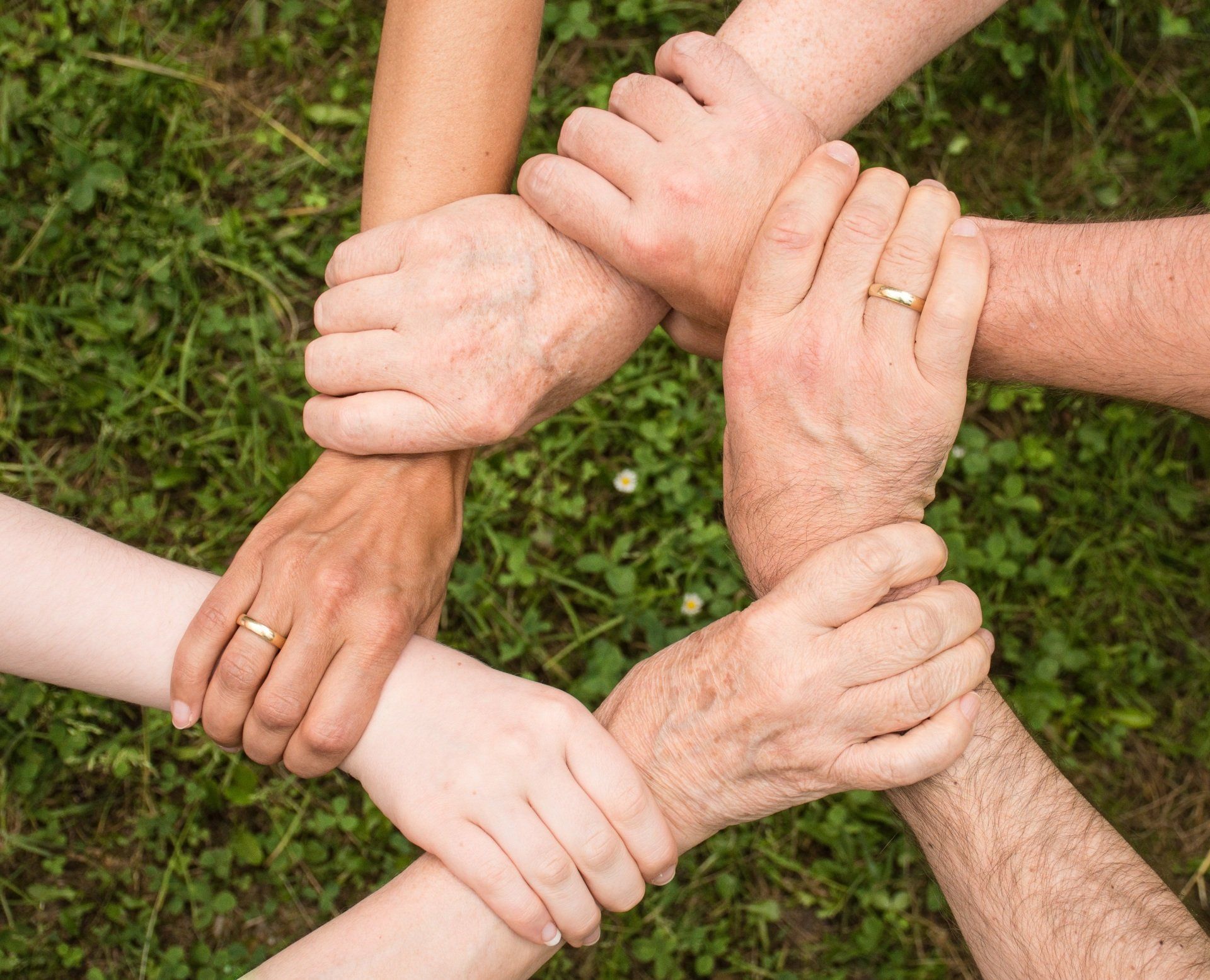
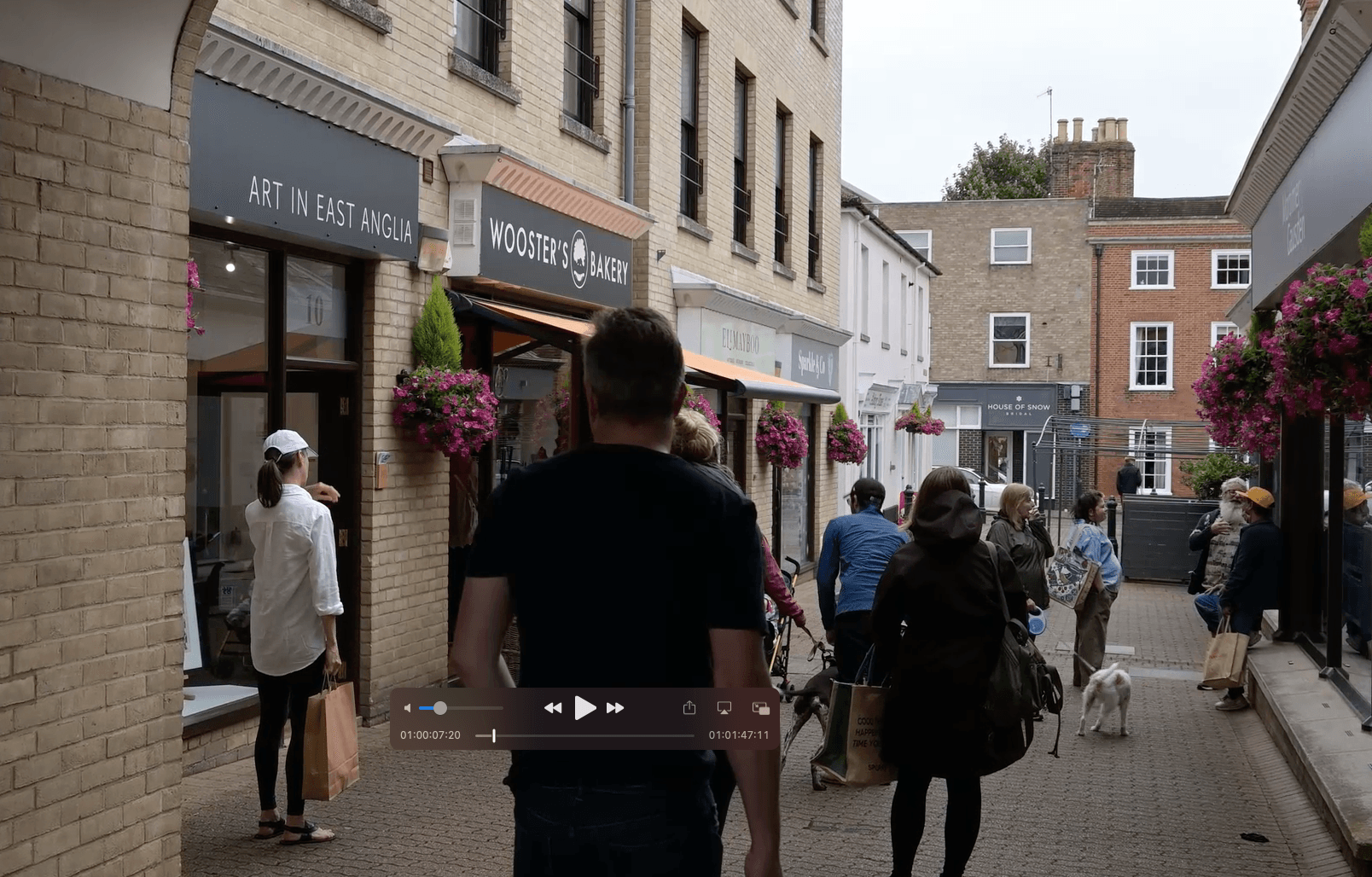
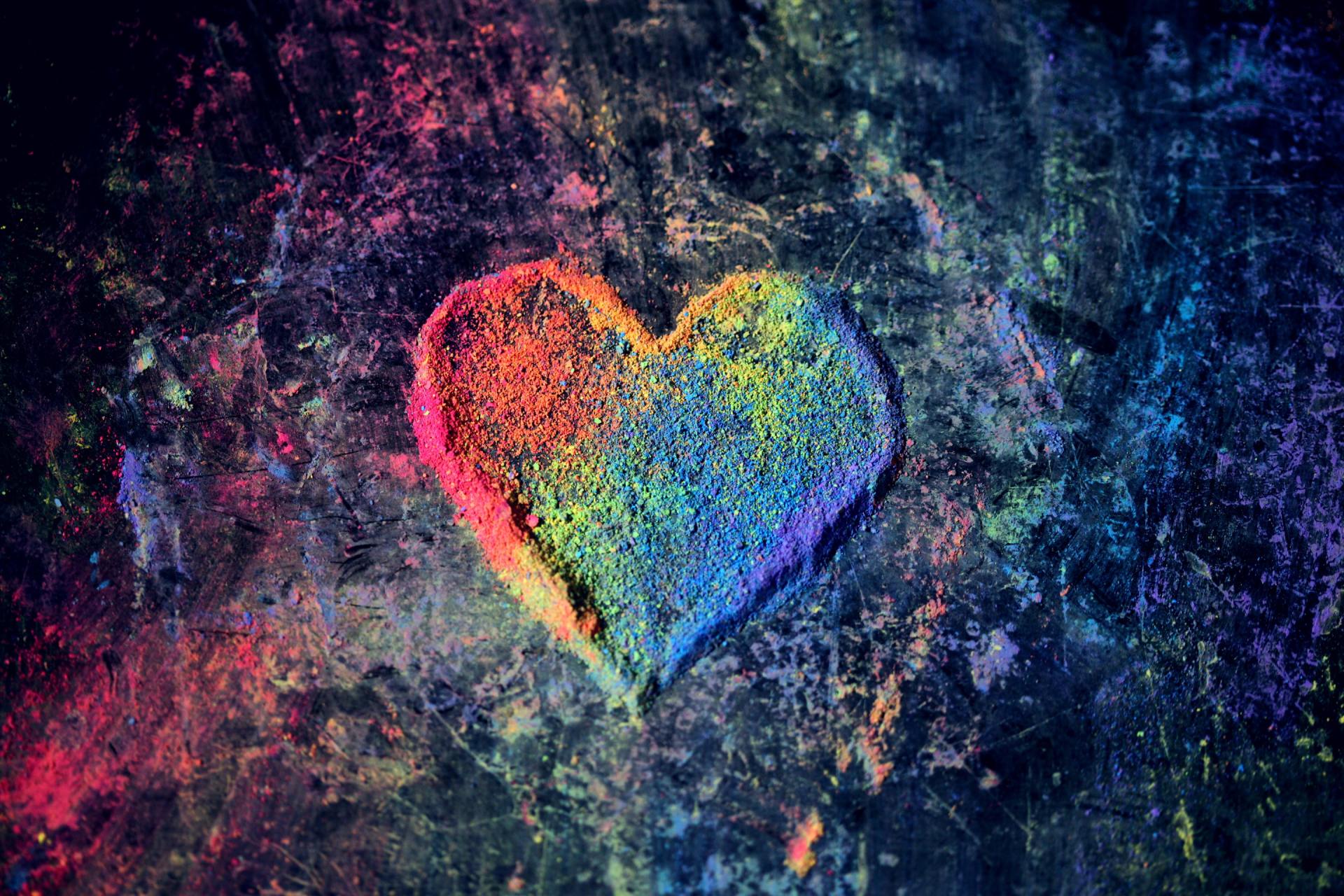
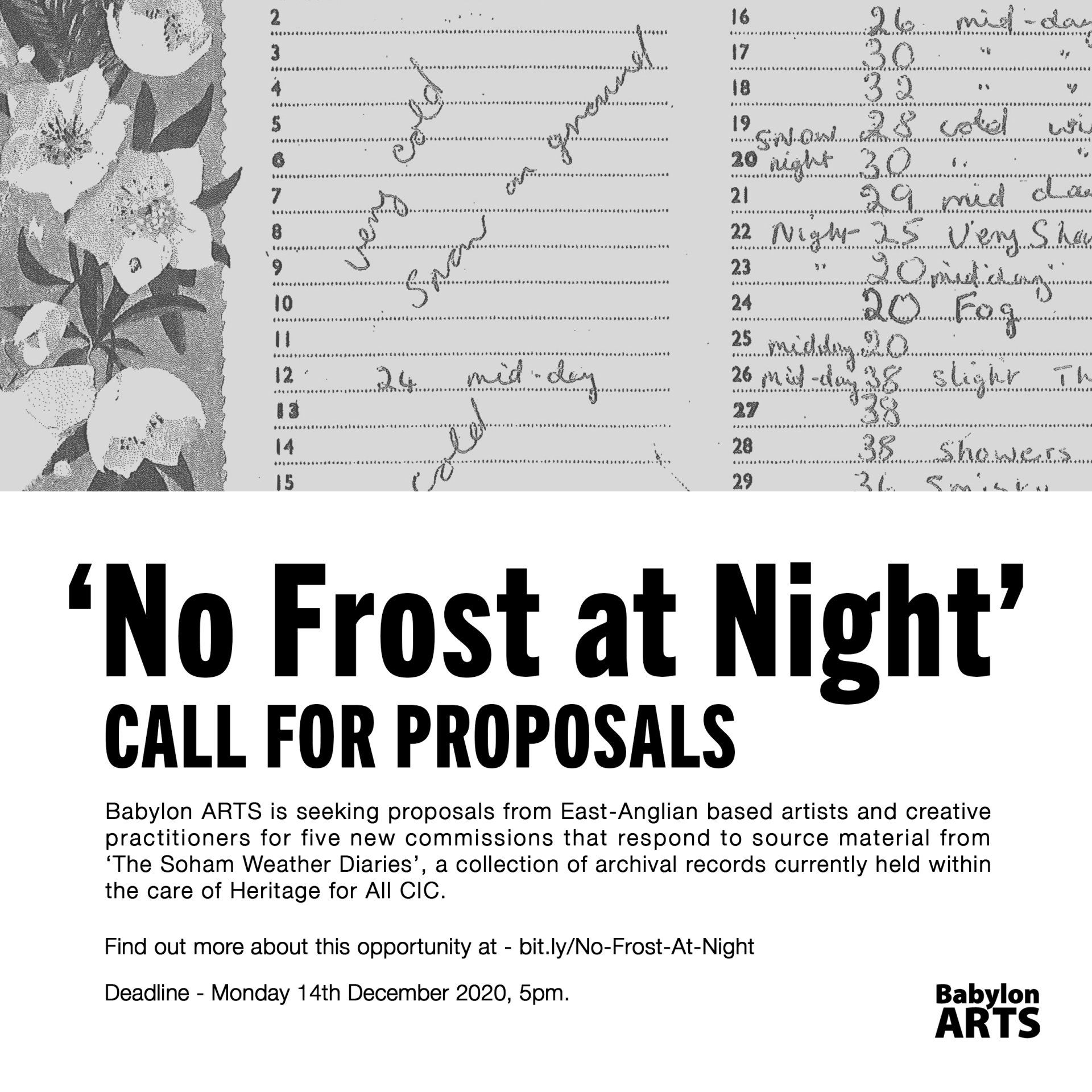
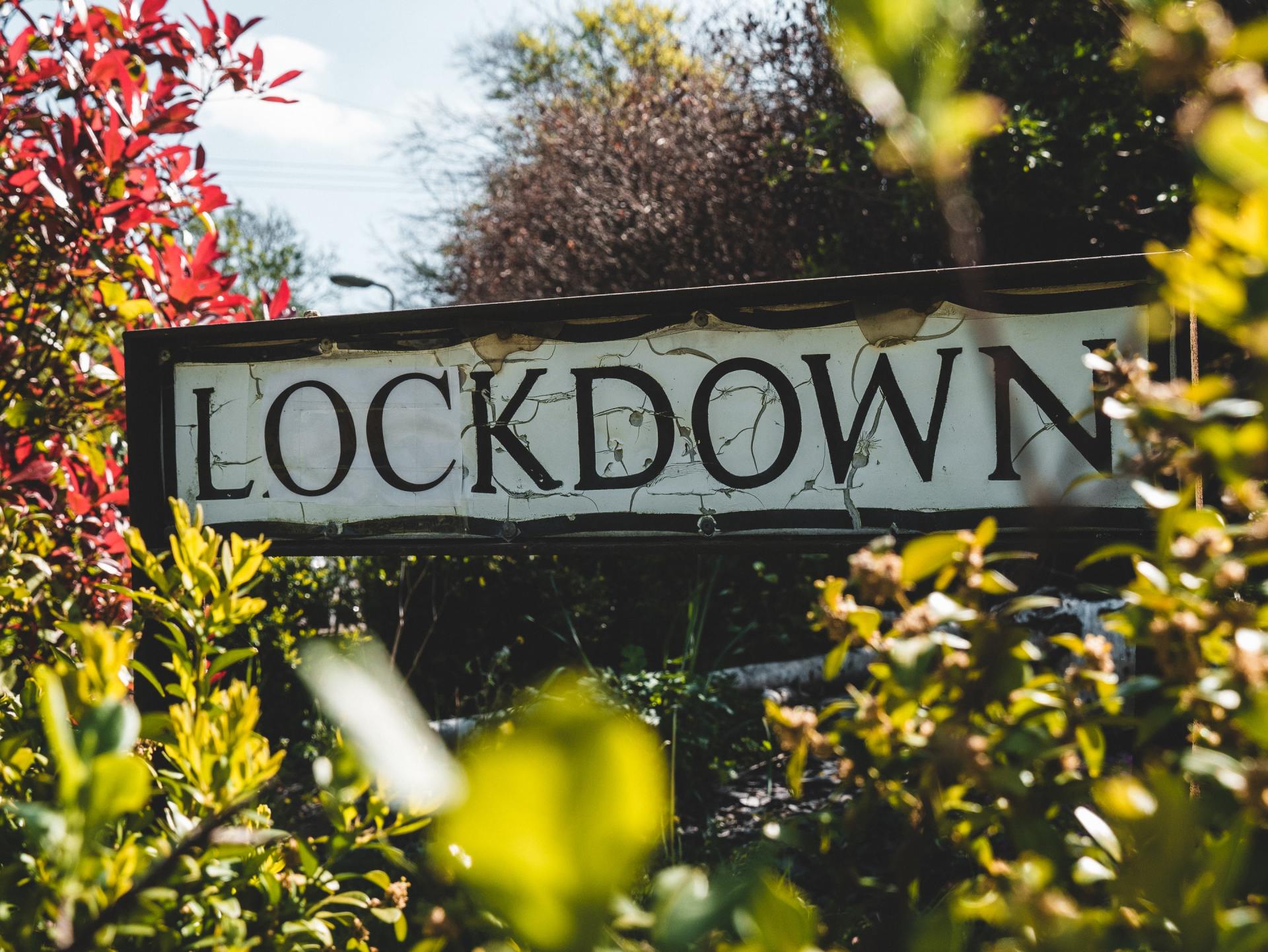
01359 256 327
info@artineastanglia.com
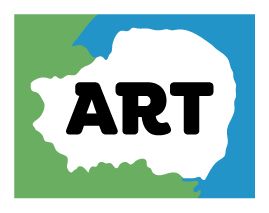
Welcome to our first Artist of the Month blog post. I thoroughly enjoyed meeting with Charmian Tate who is based in Bury St Edmunds at her home and studio. She shared her inspirations and personal journey and I was very drawn to her warm and friendly nature.
During the interview, Charmian spoke with ease and a fluidity that was both engaging and enticing. Charmian’s mother has played an integral role in her artistic path; and it is fascinating to hear how creativity has been such a grounding and healing expression in her life.
During my time in Charmian’s home I found myself mesmerised by a beautiful stained glass butterfly on her wall. The colours and forms were wonderful, and as you will see, butterflies with their movement and beauty have held a special place in her heart. I am pleased to say that I too am now a proud owner of an original ‘Sirin Glass Butterfly’.
Each interview in this series of Blogs, will have a different feel, as I will respond to the Artist’s wishes. For this one, I would recommend making a cup of tea, sitting back, and to join Charmian telling her story of her artistic journey.
Tell me about your background and your early inspirations?
Glass has been a massive passion of mine for as long as I can remember. As I was growing up, my Mother worked for many years with glass in her business, Jane Tate Glass. I’d come home from school and pop into her little studio and she would have made something lovely, or be designing, and I would go through shelves of sheet glass looking at the colours, textures, glass beads and precious stones.
I’d go along to her craft fayres and see how she worked the professional side; sometimes I would be allowed to help her. I saw people’s reactions to her work first hand, and would also mingle around looking at various textiles, jewellery, and fine art.
At that young age I was just like a sponge. Sometimes, I would go with mum to buy raw materials, and watch resident artists at the glass outlet; blowing glass and gathering different coloured frits (powders), and then turning them into artworks. That was a real grounding for me, but mum also gave me a great deal of freedom with drawing, sculpting and painting as a child. We were taken to exhibitions, performances and galleries like The Tate Modern fairly often.
When I was older I became more closely drawn to glass; and I have some very vivid memories of what I discovered. I did a project at A-levels, where I went to look at the glass in local churches; I went to Coventry Cathedral and to see Alexander Beleshenko’s panels in Milton Keynes Church. We were allowed a rare viewing, right up close on the balcony, as my mother knew the people who curated it. On these, and proceeding visits, I started to witness glass work on a different level altogether, more of a fine art level, and to come across many exciting new techniques and processes.
I come from a family of creative entrepreneurs and so witnessed that way of life, as well as the freedom it can offer if one chooses to raise children predominantly from home. My father is an International Business Journalist and Magazine Editor and is also very creative. He is passionately dedicated to his freelance business, Tate Associates. He is also a music lover, and is involved with musicians who regularly play at Ronnie Scotts, song writing, and the Jazz Scene.
My grandad was a freelance Architect and built his own stunning guest villa on a beautiful hillside in the Algarve, Portugal. My uncle John Tate has a bespoke furniture and flooring Showroom in Notting Hill, London; called Treehouse. He designs and crafts his own furniture. My auntie, Zuwena Mughairy, was a Fashion Designer and has had her designs in outlets such as Liberty’s.
There was a strong creative undertone going on throughout my early years. I did a lot of dance and performance and lot of singing, and I was forming musical collaborations from age 12. I joined my first band at age 15 and performed around London; I enjoyed all expressive subjects.
Nature has always been a strong theme in my life and my parents are both very interested in the natural world. We had a large buddleia plant with huge purple heads hanging down all summer, the butterflies and insects went mad for it. It was bang in the centre of our garden which is one of the reasons why I am so into butterflies; mainly I would just observe them feeding. Occasionally I would go out with an old fashioned net, but I recall that I didn’t really like to see them trapped.
What are the prevalent themes in your work?
If you look at the main themes that go through my work you are talking about movement, freedom and spirituality; and that feeds into my inspirations from dance and music. I’ve got lots of memories as a child of just dancing around my kitchen. Or singing at the top of my lungs. It was a great space. A good floor for tap dancing on too!
Thanks to my parents allowing and encouraging expression, I had a lot of dance lessons and amazing moments of clarity and freedom, while engaging without control. There is something about that level of experience which I am really fascinated in distilling in my creations. Call it being in flow. There is definitely a connotation with the butterfly, flight, freedom, beauty and then all the intricacy, plus I am very interested in their patterns.
I definitely believe that there is something integrally intelligent and beautiful which is a driving force behind evolution, nature, and us as fellow beings. A self-awareness if you like, an inner beauty being expressed by life forms. Therefore, in my work I like to capture where those two dimensions meet, where the personal experience of creativity or transcendence meets with that pull towards beauty and order.
I play with that concept in the design of my butterflies because they are abstract and asymmetrical; so if you look at them there is a logic, and a fluidity. There is a congruence that goes through the design but then there are also echoes and differences. An element of chance if you like. Butterflies you see in the real world are symmetrical, but you see this isn’t (showing me a piece).
I work very intuitively; when I am designing something with these pencil lines that will soon become lead, I will almost try to see something that’s not there. So I can be looking at a blank piece of paper and I do feel, (whether it is real or not, it is a lovely experience), that I am pulled to draw certain lines. I almost see them on the page before they are there. I become quite detached from any preconceptions of what is going to occur. I’ve also been obsessed with abstract art and the spontaneity it captures for as long as I can remember.
You have mentioned Glass, Dancing and Singing, are there other mediums of creativity you enjoy?
I have quite a few channels - I don’t feel completed by one element of my creativity, my inspired states are rather effervescent! I have the visual, design and painting side, and then vocally I am very analytical when I speak or write, but I also sing and write music.
I’ve got my spirituality and I’m very into Reiki and practice distance healing, that is very intuitive and has been a great exploration. I also write on the subjects of psychology and social commentary, as well as my own original poetry. I’m just really brimming over quite a lot; I need different channels to get it all out really. I’ve come to accept that I am a natural “Multipreneur”.
I feel that if I only worked in the visual, and never sang, wrote or analysed things in an intellectual way, I would feel like someone had cut one of my limbs off. I feel like all of these things do feed into each other.
So, for example, the experience of dancing, the way that you physically flow, the lines that you create. That same magic happens on the page when I’m designing or when I’m painting. The same theme will be there, same intention or lack of intention, it will be coming out through me onto the page.
When I was in dance classes watching other dancers, I wanted to draw the dancers and capture the lines. I went to a drawing workshop once where we sat and drew a dancer and she would recreate the same movement again and again like a figure of eight. Then you pick a point in that movement that you wanted to draw. I ended up with these massive sketches of the dancers.
It all feeds in, plus you have inspiration from music. I listen all the time that I design. Sometimes when I’m drawing or painting I conceive in terms of music. I’ll think ‘ups’ and ‘downs’ and textures as pitches, rhythms and repetitions. I’m just exploring that world which is a real joy and blessing.
I feel very privileged and grateful to be able to do that. It hasn’t been easy, but luckily my husband has been very patient with me! Early in life I went on a conscious mission to feel complete, collate my different talents and things I was drawn to, and run with them!
Tell me about how you came to launch your first business ‘Sirin Glass’?
I started working formally with glass, under my mother’s tutorage, at the age of 21. I had embarked on a rather winding path to finding my vocations in life, and was between degree courses at the time. It was a confusing and somewhat stressful time in my life, when I felt a great deal of pressure to be finding my path.
It turns out I was a multipotentialite, which means I have many strings to my bow, and found it quite unbearable to feel so restricted and have to channel everything into one direction so early on. At home, my fascination with the glass and design process meant it became a safe and reassuring practice for me. I found the sense of immersion and the physicality of working and designing directly by hand, hugely meditative and healing.
Luckily, I had a huge amount of support from my family and I really engaged with some of the feelings I was having subconsciously through art therapy, counselling and meditation. Even though I am a very verbal person it allowed me to express something deeper in an abstract way and reconnected me with my creativity. It felt like home.
I also began to draw and sketch more often and in a self-motivated way. I found the colour, forms and lack of pressure of that peaceful time to myself very healing indeed. My parents were wonderful to allow me time to ‘Cocoon’. It really was as though I was pupating! I was going through a major spiritual awakening which was also very therapeutic. The two focuses very much merged together and I decided at that point just to go on a trusted path because that had been my rock, to be able to have those forms of expression and psychological freedom.
I later embarked on a University degree at the University College for the Creative Arts, under the brilliant tutorage of Colin Webster. I had always wanted to complete a degree, especially as both my parents had. I was very drawn to learn many more techniques too. I studied Three Dimensional Design (Glass) and graduated with a BA Hons in 2007.
Is being an artist lonely?
I am slightly allergic to too much control, I deeply crave the feeling of autonomy. When I have pursued more conventional paths professionally and in study, I have felt rather claustrophobic. But as much as it is difficult spending a great deal of time on your own, I think I deal with that better than constantly being bombarded by other people’s demands and conversational noise.
I love peace, music and solitude. I get easily overloaded. I also consider myself to be an Empath, which means I pick up on atmospheres and energies very easily and they can affect me deeply. So getting to choosethe people, situations and environment that I am around works far better for me. I do talk to myself fairly often, let’s be honest, we all do it! I also listen to Radio 4 for mental stimulation, correspond with others and keep in touch with friends in person socially, or I write.
In these ways I find I can survive mentally, but yes it is a challenge for me as I am very analytical (as I’m sure you can tell) and have a rather active imagination, so being in my studio a lot of the time on my own sometimes can feel quite isolating at times; I just have to juggle that.
On the flip side when I get engrossed in my work, none of that matters and it lets me switch off. This allows me to go into a completely different mode, all that energy comes out in a much calmer way, which I suppose is connected to my mother; she was a very a calming force.
Professionally what is your goal?
As a mother myself of two children, and having a husband who works away from home a great deal, I have to accept that at times I’ll be making huge progress and building great momentum, and then I may have a week of sick children or full-time childcare, and have to scale back and adjust, that’s the most challenging part.
It was lovely to be able to earn some money around the children before they started school full time, and be completely flexible; I practiced attachment parenting so it was very important to me to do this; but it left me rather more dependent on my husband than I would like, especially for childcare. At times I was only able to work when he was free, as I’ve had no further help with the children.
I am finally at that point now, after seven years of persevering, when they are both in school; so it’s time to get that momentum back. This year I’ve just got to “go”.
What does “go” mean to you, how does that look?
So basically I’m making sure I create the time to get that momentum flowing and keep it flowing; with the aim of working my businesses full time, five to six days a week. All cylinders blazing! I’m making sure that everything is clear, the children are settled in school, that I’m happy with the house and things are organized. My studio and home are finally pretty together after the kids ransacking things, so I’m ready to roll!
How do you share/exhibit your work?
I generally exhibit in galleries and high-end boutiques, occasionally I’ll do a craft fayre, I also have a website and a very active Facebook page ( Sirin Glass ). I’m also getting onto new platforms such as the Art in East Anglia Directory and am looking into Etsy so I can get a more international reach.
A lot of pieces I make are small enough to post internationally. I am making some bespoke semi-precious jewellery which is proving very popular. I have managed to accumulate a huge amount of equipment and materials over the years.
I’m also training up a couple of women who also want to flexi-work around their children to help me with making. I’m fully training them, free of charge, so that then, as the business takes off, they can benefit from the profits as well. That will also make my production levels more consistent.
I also teach one-to-one workshops flexibly and at a very competitive hourly rate from my workshop from home. People can come from anything from two hours to a week, to learn from my experience and create pieces of their own.
How has your work changed?
Over time I have learned to trust my instincts over my preconceived ideas. My techniques have become more refined; so I have learned to make things look more delicate and effortless. With my sculptures I dare to pull the wax really quite fine and manipulate in complex ways because I trust the process. I now own my own large Kiln so I can begin to really experiment, I can’t tell you how exciting that is.
I really enjoyed glass blowing, both during my degree, and when working in London hot shops after l graduated. I was very stimulated by the three dimensional element; I also found the fluidity; the spinning and falling movements of molten liquid, absolutely fascinating. It’s as though the glass is dancing before your eyes.
However, I really missed physically touching the material during the forming process, as you have to connect with various tools. Of course, you cannot touch the hot glass. Everything is very instant when your material is flowing, and you can’t be too precious, which taught me not to take too much time in making decisions and to work more quickly.
When I sculpt I like to try and capture the same kind of fluidity in my forms, but I really enjoy the tactile connection with my material. I find it very grounding. I ended up really drawn towards sculpting clay or wax into organic, flowing shapes and textures.
They tend to have echoes of natural forms and voids. Generally, they echo leaves, shells, seed pods, flowers, vines, dancers, insects and skeletons. It has been said by another Artist friend that these are all very female symbols.
I carefully craft these to be fine enough for the light to travel throughout, and imbue the piece with the magic of refraction and brilliant colour. My sculptural pieces are made in wax and then melted out of a quartz plaster mould. This is called the ‘Lost Wax Casting’ technique. You can do a similar process with clay, but one can’t then pick it out of a complex mould very easily. With the wax I can go as detailed as I like. I then melt the wax out of the crevices with a hot steamer, which means I can bring more detail and so more light into the piece.
I have refined and adapted my methods and processes in glass. When employing the ‘Tiffany Leaded Glass’ technique, I have become far braver with the shapes I cut and am making work that is a lot more intricate. I have learned to use traditional leading techniques for external windows and to fit them. I am now embellishing my smaller tiffany works with detailed wire work and a variety of semi-precious stones.
So if I list what I can now create in glass it goes like this: Bowls, Plates, Tiles, Mirrors, Jewellery boxes, Jewellery, Lighting, Sculptures and Sculptural forms, Windows and Window hangings.
Do you work to commissions?
I generally receive commissions from people who I meet directly, or through people who have seen my work on display publically. One window that I made came about after a lady had seen a large Tiffany mirror I had on show in a Gallery in Woburn. The lady requested the same design, but she wanted it to be developed further, and made into a large internal window in her house. I attended the property twice, and designed the work to her specifications, altering the colour scheme to suit her interior.
Another lady saw my back-lit sculptures in a Gallery, and then commissioned a bespoke sculptural Menu Box for outside her local Tea Rooms, which she ran. She had some specific requests on shape, style and design, but then gave me free reign to create freely within that framework.
I also do commissions for painting and drawing as well, I enjoy making abstract pieces as well as portraiture.
What is the role of Art in society?
Growing up surrounded by my parent’s beautiful things, not always expensive but beautiful; like a handmade ornament, a mask on the wall or an abstract painting, I became very attached to these objects. I would often find that I would get lost when looking at them; and fascinated by how they’d been made.
My father would bring fabulous things home from China or Japan or wherever he’d been travelling with his work. I think I found it a transcendental experience to a degree, and a way to connect with the wider world, with humanity even.
When I see something that captures my consciousness I find it a really amazing way to engage with the world. I think it gives me very strong memories, not necessarily something crystal clear in your mind, sometimes yes, but often simply an experiential impression. Deep observation is quite an intellectual exercise.
Coventry Cathedral displays some huge engraved angels on high up windows, and the impression I got from those as a teenager was just out of this world. If you imagine some of those amazing paintings in the Tate and then you light them up and all the colours are glowing. I see colour and light like that. I see all the different shapes and forms in three dimensional ways, so even when I am working in 2D, there is a sculptural approach to my designs.
What I hope to do when I make something is to create an object that someone can have a deep connection with, in that they feel an attachment to it. That’s one of the reasons why I really enjoy the commissioning process and creating something bespoke for people. I will often take the colours to them and sit with them and and I’ll get a feeling from that.
Sometimes I can send a variety of designs to the customer. One time a lady chose the top half of one design and the bottom half of another and asked if could we merge these two together for her box light fittings. This client then came to the glass warehouse in London where I buy my colours, and chose her own glass. I’ve done that with a few clients. They really enjoy it.
One doesn’t often experience that level of service. I worked for a design company in Harrods which provided an interior design process, which was formative. My mother also made many client visits. This is a personal, human and unusual experience and the connection between the client and myself, means that the person feels an extra level of human connection to their bespoke, handmade object.
I don’t like hard lines, I like curved lines, for the object to look human. I think that’s the whole point of handmade work, that it is not machine made. I also find curves sensual and reminiscent of human contact and natural forms, love in fact.
With glass you do strive for perfection but there is always going to be a human element to it. The flat glass I choose for Tiffany work will be textured, some of it will be hand blown; so I’ll deliberately put lots of different kinds of glass together in a way that most manufacturers would think is too time consuming. Often they look like pieces of textiles in fact.
I think people are bombarded with heavily manufactured things and it is possible to become desensitized and complacent about the potential of a handmade object. These objects can last for hundreds of years. My mum has a wonderful piece of textile on the wall, it is a ‘Sampler’ from 1802 that was made by a distant family member and addressed to their parents, every weave is clearly performed with such attention to detail and love.
I like to think that some of these things I’ve made will be passed down from someone’s home, through the generations; I associate objects with people. For example, my Grandma had lots of lovely old Bristol blue and dark green bottles, all shapes and sizes. She had a collection in one of her cove windows, as my Grandad built arches into each window. As soon as I see that colour of glass it takes me straight back to those moments, watching the incredible Portuguese sunlight coursing through the glass, sparkling and powerful; and so very tranquil. I am trying to echo and pay homage to that. A lot of my work will come from a feeling place, what is being expressed from a deeper level rather than superficially.
I very much feel guided, by what looks right and what feels right; “Trying to bring intuition into form.”
Co-writers: Helen Hopkin–Jones & Charmian Tate
Edited by Paul Tate
Charmian is currently making a wide range of window hangings and jewellery based on flying insects and birds. Please do get in touch if you would like to find out more about how you can purchase some of her wonderful work.
Find out more about Sirin Glass: www.siringlass.co.uk





© 2022 – Art in East Anglia
Terms and Conditions – Privacy Policy – Cookie Policy
Please note all relevant creative assets of this website are the intellectual property of
LucidSynergy Ltd ©2018
*Due to popular demand we now include Essex as part of East Anglia (unofficially of course!)